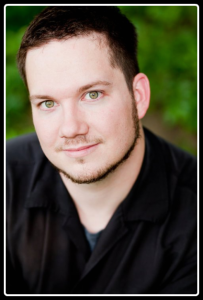 In the fall of 2009, I started a grand experiment. The English department at my alma mater lost their Tech Writing professor at the last minute, and the chair of the department asked me to step in and teach the class for a semester.
In the fall of 2009, I started a grand experiment. The English department at my alma mater lost their Tech Writing professor at the last minute, and the chair of the department asked me to step in and teach the class for a semester.
I agreed, and then scrambled to put together a lesson plan that captured the things I remembered from my own Tech Writing course in college, and the things I do in my daily life. In fact, I quickly set aside the first step, and started focusing on the things I wished I’d learned in that college class.
At the time, I kept in touch with friends and family via a little journal on Blogger, and as the semester went on, I posted regular updates about my experiences teaching the class. And I had a surprising number of people respond to those posts saying, “I wish I could sit in on these classes.”
That’s a little baffling. I don’t often talk about my work, because Tech Writing isn’t a terribly exciting profession. It’s an incredibly useful one, but it’s not very interesting.
And then, at the same time, I was heavily aware of the pressure to “build a platform” for my eventual publishing deal. And in the midst of all that, Carlos came to me with the suggestion that I should start a writing advice blog. And thus, in December 2009, Unstressed Syllables was born.
If you’re here, you probably already know most of that story. I mention it now because that combination of factors influenced the initial direction of the site. I was so embroiled in the teaching of Tech Writing that I designed the site around a significant amount of that.
It took me a while to settle into a publishing schedule, but my first regular pattern included one Tech Writing lecture and one Creative Writing lecture every week. That brought in an eclectic mix of audience — some people looking for advice to make their business and web writing less bad, and others looking to make their storytelling better.
And, unexpectedly, my technical audience was larger, more vocal, and more dedicated. That really took me by surprise. That’s how I made friends with Dave Doolin, that’s why I put together my first e-Book, and it’s why I started drumming up interest in the ill-fated month-long e-Book Challenge (which never actually happened).
I spent several of those first months reading a lot about making a successful blog business. And this story is the story of me not doing that. See…last year around this time, I became an entrepreneur for the first time in my life.
When I dreamed up the Consortium, I discovered a business I wanted to launch, one I wanted to run. Up until then I was just going through the motions with my website, but when I discovered the Consortium, I discovered my purpose.
And it wasn’t teaching Tech Writing. It wasn’t setting up paywalls and guest-posting and search-engine optimizing. It was connecting artists and producing quality art. And, to my surprise, it was mostly connecting artists in the real world. Direct human interaction. Baffling.
That’s what I’ve been doing, though. I missed a couple tech writing lectures over the summer, and ran a couple that were thinly-veiled discussions of my business plans, and then around the time I published my first book through Consortium Books, I dropped the tech writing series altogether.
It’s not that it was a waste of time. The technical advice was good business, and when I stopped posting it I lost readership. I lost an audience that would have thrown money at me if I’d put together the Challenge. I lost options.
But along with the options, I lost distractions. I gained focus. I’m astonishingly busy these days — between work and my company and my education and my family and my hobby — but virtually all of those things are pulling me in the same direction. All of them are channeled with precision toward the future I most want to live in.
And that future involves self-publishing. Or, more accurately, indie publishing. Because Consortium Books isn’t just me. Consortium Books is four or five extraordinarily talented people, all throwing in together to make something amazing. And that’s what I want to talk about this week: who we are, and how we get a book made.
Come back on Thursday for the juicy details.













